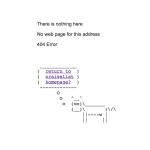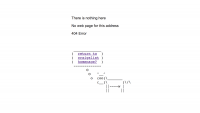As Flash Apocalypse approaches, here are HTML5 rules-of-thumb to keep in mind
On June 30, Google will stop accepting Flash ads. That means learning to love HTML5.
The end is near.
The end of Adobe’s Flash as a technology for ads, that is. While the death of other marketing phenomena has sometimes been exaggerated, we know that Flash is racing toward its demise on June 30.
On that date, Google will no longer accept Flash-built display ads into AdWords and DoubleClick Digital Marketing. And just to make sure such ads are no longer breathing by January 2, Flash display ads will no longer run on the Display Network or through DoubleClick on that date. (At the moment, video ads built in Flash are not impacted.)
As Flash-using marketers make their transition to HTML5 alongside animated GIFs for rich media ads, there are a few things they might want to keep in mind.
First of all, Monotype director of strategic partner engagement Theo Skye noted, Flash has never been of much use in the mobile world. Apple never really accepted it, and it wasn’t that popular on Android, so its use in advertising was really focused on computer desktops.
As a result, he said, marketers who created Flash ads often had a separate mobile effort — and now they “will have to change [years] of workflow.” That means planning for HTML5 responsive ads that can work on all platforms, which, in today’s mobile-centric world, usually means planning for mobile first.
It also means understanding that, in the HTML5 world of tools, there’s not yet a 500-pound-gorilla equivalent to Adobe’s tools for Flash.
“You do have to think about it differently because of the relative nascency of tools,” Skye told me. “There’s no clear leader of the pack.”
When doing that, he suggests, it would be a good idea to see how the tools in question handle text.
“The [common] workflow in HTML5 is to create images of text,” he said. Typically, he said, a Photoshopped image is sent to the team developing the ad, to create a bit-mapped layer of text. But, he pointed out, live text using as-needed fonts — such as those supplied by his company, Monotype — can support targeted ads whose dynamic content is regenerated for, say, a specific location or user segment.
“When you go to a web site and there’s [a text font] not on your [device], it happens through web fonts,” Skye noted, “served to the browser and styled to the browser.”
“You really have to be thinking about a font strategy.”
Skye pointed out that in a Flash SWF file, the font was embedded. Marketers making the transition to HTML5, he said, should look for tools that fully support the various kinds of web fonts, tools such as Tumult Hype, Celtra’s AdCreator, Flite and Flexitive.
Daniel Jacobsson, co-founder and head of innovation at HTML5 ad firm BannerFlow, pointed out that support of web fonts ensures “brands can use their own fonts [and] that their banner ads always adhere to their brand guidelines.”
The same font considerations apply to those creators of HTML5 ads who choose to hand-code them, as well as those ad platforms and agencies that create the ads for you.
While creating HTML5 responsive ads that work across multiple screen sizes and platforms is a big boost to productivity, it also means marketers need to plan for much more testing. Skye said that Flash testing “used to be easy,” because it was a SWF file played back by Adobe’s player. Now, the HTML5 ads are displayed in rendering engines on multiple platforms in multiple browsers and apps.
If time still exists
Toward that end, he recommends that marketers adopt the Interactive Advertising Bureau’s HTML5 Ad Validator, a tool it recently introduced to offer some consistency to such testing. Expect to see it built into most HTML5 tools via an API, he said.
Yoni Levi, vice president and marketing director at Miami-based HTML5 ad production company Digitalland, cautioned that transitioning marketers need to keep in mind file size.
A typical Flash banner ad, he told me, might be about 40k bytes. A typical HTML5 animated ad, he said, runs about 200k.
The difference is largely because HTML5 consists of a variety of interacting files — text, image, CSS, JavaScript, fonts and so on — while Flash’s SWF file was one compressed bundle. In this age of relatively fast internet transmission speeds, he said a 200k file is not a major concern for most users — but marketers need to do everything they can to keep their file sizes within reason.
That includes the aforesaid consideration of font strategy, so that fonts load as needed, and optimization of images and animation. For animation, he recommends the use of an animation tool that employs an external JavaScript library — a tool such as GreenSock — as opposed to hand-coding, particularly to optimize file sizes.
Levi also suggests you lengthen your production schedule, since “much more time [is required] for HTML5.”
That is, assuming time still exists in the post-apocalyptic world.
Marketing Land – Internet Marketing News, Strategies & Tips
(54)
















